Hoka One One Rincon
Test Location: Gunnison – Crested Butte Valley, Colorado
Test Duration: 360 miles
Stated Heel-to-Toe Drop: 5 mm
Stated Stack Height: 32 mm (heel) / 27 mm (forefoot)
Stated Features:
- Single layer mesh upper offers breathability without added weight
- Accentuated heel pull tab for easy entry
- Slim tongue package reduces additional weight
- Full compression EVA midsole provides signature Hoka cushioning
- Revised early stage Meta-Rocker for quicker acceleration
- Full ground contact design with strategic high-abrasion rubber zones to reduce weight
MSRP: $115.00
Size Tested: US Men’s 11.5
Stated Weight per Shoe (US Men’s Size 9): 218 g / 7.7 oz
Blister Measured Weight per Shoe (US Men’s Size 11.5): 237 g / 8.4 oz
Reviewer: 6’1”, 145 lbs
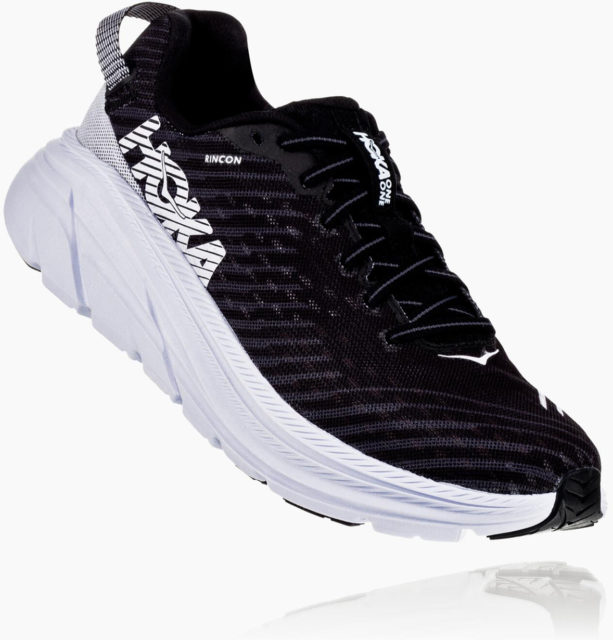
Intro
For most of the year, I’m not much of a road runner. But when winter hits Gunnison, it’s pretty much either roads or nothing for a couple months. I’ve definitely done my fair share of road runs in trail running shoes, but I like having a few solid road options for winter training and the occasional road run throughout the year. When it comes to road shoes, I’m all in on maximal-style models. While shoes with super high stack heights can feel a little unstable on trails, I love having some extra cushioning for running on even surfaces like pavement. I also tend to notice shoe weight a little more when running on roads, so I generally try to find lighter shoes that still have a good amount of cushion for road running.
With those criteria in mind, I was super excited to try out the Hoka One One Rincon. It certainly checks the low weight / high cushion boxes, and it’s got a fairly similar design to the early versions of the Hoka One One Clifton, which remain some of my favorite road shoes. The Rincon is crazy light for how much cushion it has, so I was curious to see if its stripped-down design still offered the comfort of heavier, similarly cushioned shoes.
After putting over 300 miles on the Rincon, I’m very happy with how the shoe performs pretty much across the board. As always, there’s some room for improvement, but the Rincon is undoubtedly one of the best road shoes I’ve run in. In this review, I’ll break down each component of the shoe to explain exactly why.
Fit
As with every shoe, we’d recommend trying on the Hoka One One Rincon in person if at all possible. I’ll give my general impressions of the shoe’s fit, but there’s no substitute for actually trying the shoe to make sure that its fit will work for you. For reference, I have fairly narrow feet with low arches and like a shoe that fits securely through the heel and midfoot while leaving some space for toe-splay.
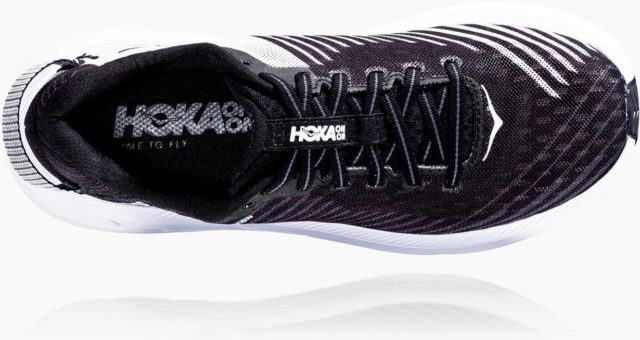
The Rincon fits similarly to other Hoka shoes I’ve run in. It’s got a secure yet comfortable heel cup and midfoot that works well for my feet. The stretchy laces and soft tongue make the shoe very comfortable, even when I really crank down on the laces to get a tight fit.
Like many Hoka shoes, the Rincon does have a fairly narrow forefoot. The relatively stretchy mesh upper lets my toes spread out a little, but it’s noticeably more constricting than a shoe like the Altra Torin, which features Altra’s signature, wide “FootShape” toe box. Any time a shoe feels narrow on my (fairly narrow) feet, I’m a bit concerned that it won’t work at all for people with wider feet. Hoka does have wide versions of several of their models, but unfortunately, the Rincon is not one of them. If you do have especially wide feet I think the Rincon could still work thanks to it’s stretchy upper, but it’d be especially important to try them on in person to double check.
One final note on the Rincon’s fit is that it did require a bit more of a break-in period than most other shoes I’ve run in recently. I very rarely get hotspots or blisters from running in new shoes, but I developed fairly sizeable blisters on the inside of the balls of both feet after my first few runs in the Rincon. I noticed a little extra creasing in the upper in that area when tightening the laces, which I think was the ultimate cause of the issue. With that said, I haven’t had any issues with the shoes since those first few runs, even though I regularly use them for 13-16 mile runs. It’s certainly no deal-breaker, but just be aware that you might have to break in the Rincons a little more than you’re used to.
Weight
The Rincon is extremely light, especially for how much cushioning it has. I was immediately impressed by how light the shoes felt when I pulled them out of the box, and they feel equally light on the road. For comparison, here’s how the Rincon’s weight compares to shoes with similar cushioning levels from Hoka and other brands (stated weights based on a US Men’s size 9):
218 g / 7.7 oz – Hoka One One Rincon
252 g / 8.9 oz – Nike Zoom Fly 3
255 g / 9.0 oz – Altra Duo 1.5
258 g / 9.1 oz – Hoka One One Clifton 6
286 g / 10.1 oz – Altra Torin 4 Plush
So when it comes to low weight and high cushion, the Rincon is pretty much in a league of its own. It’s one or two ounces lighter than pretty much any other shoe with comparable amounts of cushion, which is a pretty significant margin. As I said in the intro, I tend to notice shoe weight a bit more on roads than on trails, and the Rincon knocks it out of the park on this measure.
Upper
Like the rest of the shoe, the Rincon’s upper is simple and effective. The open mesh material breathes very well and dries quickly after running through puddles or rain squalls. As I’ve said, the stretchy laces and moderately cushioned tongue allow for a locked-down, yet comfortable fit. The midfoot area also has some more structured mesh strips that anchor the laces to the midsole, further improving the fit. I also really appreciate some of the smaller details on the upper. For example, the tongue has elastic loops that you can tuck the laces into to keep them from flopping around and untying themselves during runs. The heel pull tab is also about three times the size of the heel tabs on most shoes, which makes putting the Rincons on noticeably easier. Neither of these features are things I’d usually think to look for in a shoe, but they’re definitely nice to have.
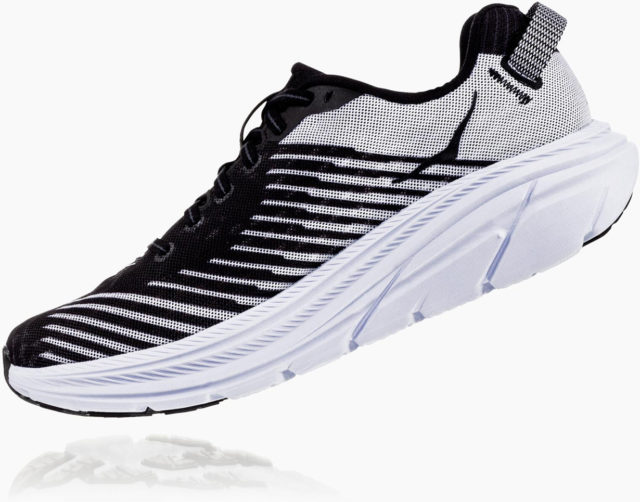
While I’m pretty happy with the upper overall, I do think it probably has the most room for improvement of any component of the shoe. As I mentioned in the Fit section, there’s a fair amount of extra material in the forefoot area that can bunch up and cause hot spots when you really cinch down the laces. This might not be as much of an issue for someone with wider feet or higher arches, but I think the problem could be completely solved if Hoka just took out some of the extra upper fabric.
Midsole
The Rincon features a classic max-volume Hoka midsole, which performs pretty much how you’d expect of a shoe with a 32 mm heel / 27 mm forefoot stack height. The compressed EVA foam Hoka uses for the Rincon’s midsole doesn’t feel overly soft and pillowy, but it does provide ample cushion and decent energy return. Some recent lightweight / high cushion road shoes like the Altra Duo 1.5 and Hoka Clifton 5 have been criticized for having overly firm cushioning. While I haven’t run in either of these shoes, I don’t think that the Rincon’s midsole suffers from similar problems. The Rincon’s cushion is fairly firm, but it’s soft enough that it still feels like a maximal, cushioned shoe.
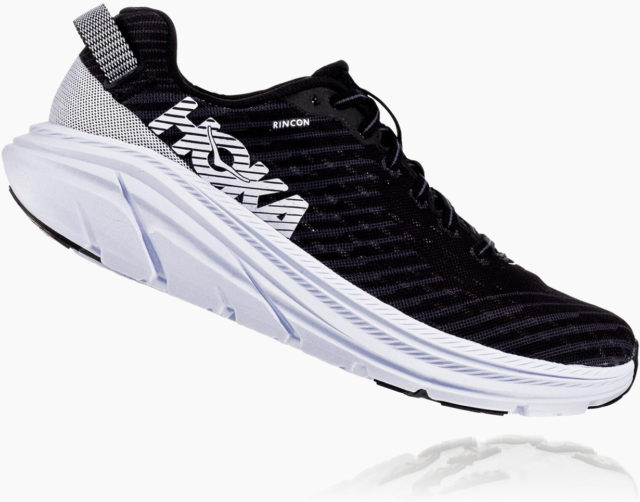
The Rincon’s EVA midsole isn’t quite as springy and energetic as the CMEVA compound used on the Hoka Evo Speedgoat, but it still provides good energy return and cushion. Unsurprisingly, the Rincon’s cushion doesn’t feel quite as fast as a low stack height, firm-cushion shoe like the Salomon S-Lab Sense 8, but it does feel smooth and efficient (especially given its level of cushioning) at pretty much any pace. The harder impact of running on roads in low-stack shoes often leaves me feeling pretty beat up, but the Rincon provides enough cushion to alleviate much of the discomfort of pavement pounding.
The Rincon has a 5 mm heel-to-toe drop, which I think is right in the sweet spot for road shoes (at least for my preferences), particularly when paired with the Rincon’s rockered profile. A 5 mm drop is low enough that I don’t feel like I’m running around in high heels all the time, but high enough that I’ve never experienced any of the Achilles / calf issues that sometimes accompany running in zero-drop shoes. All told, the Rincon’s moderate drop, comfortable cushion, and rockered shape make the shoe feel smooth and fast, whether I’m out for an easy jog or pushing the pace during a workout.
Outsole
As previously mentioned, the Rincon’s outsole is very minimal, being comprised mostly of foam, but it does work well for its intended purpose. The rubber pods in high-wear areas have done a pretty good job of protecting the shoe from wearing down, and they also provide ample traction on both wet and dry pavement.
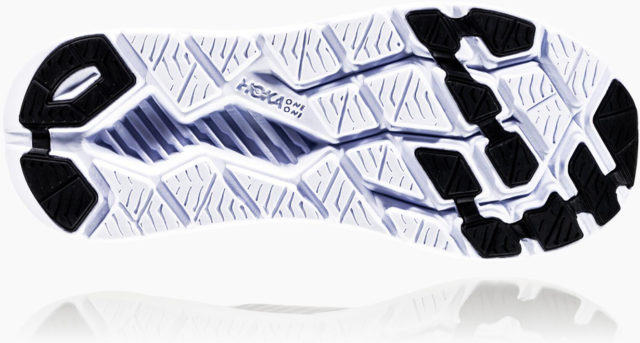
I’ve used the Rincon for a few runs on dirt roads and well-graded gravel trails as well, and it holds its own on these surfaces. The large cutouts in the outsole give it enough relief that it grips gravel surprisingly well for how minimal it is. I definitely wouldn’t recommend the Rincon as a full-on trail shoe (Hoka’s Challenger ATR 5 is better for that), but if your road runs often include some non-technical dirt, the Rincon certainly provides enough traction to handle it.
On the Road
The Rincon was my primary training shoe throughout the winter, so I’ve had the chance to test it across a wide range of distances, speeds, and conditions. It has performed well in all of them, proving to be a versatile shoe. The ample cushioning seems to reduce my foot and leg fatigue on longer runs (up to 2 hours) relative to lower stack height shoes like the Nike Terra Kiger 5. While that didn’t come as much of a surprise, given that the Rincon is a maximal shoe, the Rincon’s excellent performance at faster speeds did.
I’ve noticed that maximal trail shoes often don’t feel quite as speedy as their more minimal counterparts during workouts, but the Rincon feels just as smooth and fast during a hard-tempo road run as it does on a recovery jog. I think the rockered midsole geometry helps with this, but I attribute most of the shoe’s efficient ride to its crazy low weight. Whereas many maximal shoes tend to feel clunky and overbuilt at faster speeds, the Rincon retains its nimble, efficient ride because it just doesn’t feel like you’ve got much on your foot.
The Rincon reminds me a lot of the Clifton 1, which was just about as light and had similar amounts of cushion. If you’ve run in earlier versions of the Clifton and find the current version a little too heavy, I think the Rincon could be a great option. The Rincon does have slightly firmer cushioning than the Clifton 1, but it’s soft enough to maintain the super light, super cushioned feel of the Clifton 1.
Before the Rincon, I did most of my road running in the Altra Torin 3.0. While the Torin had a similar stack height to the Rincon, the Rincon feels like it does a much better job of absorbing shock. The Rincon also feels much more efficient at faster paces thanks to it’s lighter weight and more rockered profile. Really the only area that I think the Torin can beat out the Rincon is the fit, and that’s still a subjective issue. The Rincon’s narrow forefoot did cause some rubbing and blisters for me early on, while I found the wider forefoot of the Torin much more comfortable.
Durability
After about 360 miles, the Rincon is still going strong. The upper isn’t showing any major signs of wear. The upper has definitely softened up a little over the course of several months of use, but if anything, that’s just made the shoes more comfortable. The parts of the outsole without rubber to protect the midsole foam are pretty shredded, but not to the point that it affects the shoe’s ride or traction. The rubber pods are also showing some wear but have plenty of life left in them. Finally, the midsole has packed out a little over the last few months, but it still provides plenty of cushion.
Overall, I’m as impressed by the Rincon’s durability as I am by most other features of the shoe, especially considering how light it is. I usually expect super light shoes like the Rincon to start breaking down after 200-300 miles, but the Rincon looks like it will probably last more like 400-500.
Who’s It For?
I think that the Rincon has a place in most road runners’ shoe lineup. It’s as light (or lighter) than most road shoes with much less cushion, so if you’re usually not a fan of overbuilt maximal shoes but want something with some extra cushion for long days, the Rincon will almost certainly fit the bill. Conversely, if you’re a die-hard maximalist looking for a lighter option for races, workouts, or just general use, I think the Rincon is the best option available. It might not work as well for runners with especially wide feet, but if the Rincon’s narrower fit does work for you, I’d highly recommend snagging a pair.
Bottom Line
I’ll happily admit to having somewhat limited knowledge of road running shoes, but the Rincon performs well enough that I feel confident that it’ll be a solid option whether you’re a seasonal roadie like me or stick to the pavement year-round. It feels comfortable and efficient whether you’re jogging around the block, doing intervals on a treadmill, or doing a long run. Best of all, the Rincon’s excellent durability and reasonable price tag ($115.00) give you a pretty solid bang for your buck. If you’re on the market for a new pair of road shoes and like some extra cushion (or are even just cushion-curious), the Rincon is definitely worth checking out.

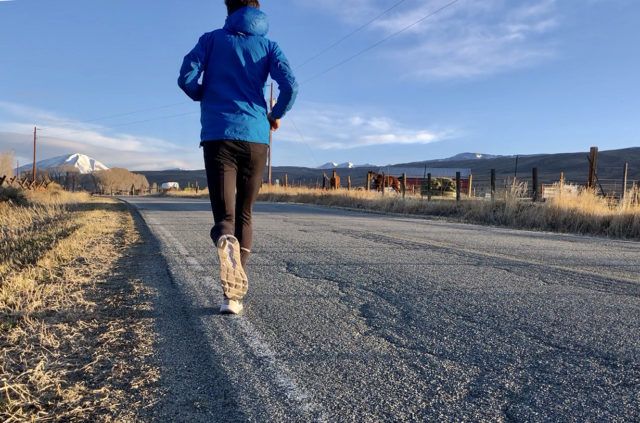
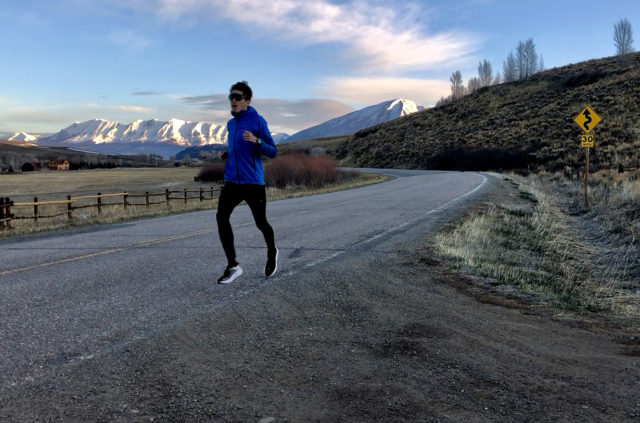
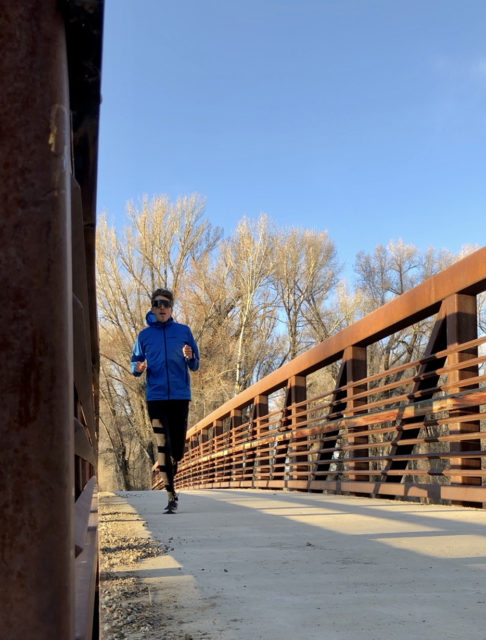
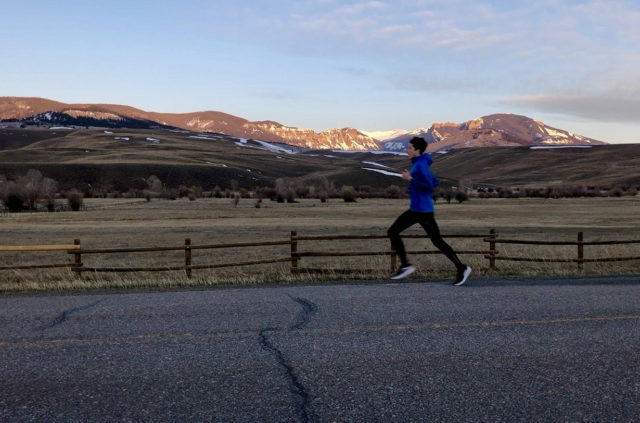
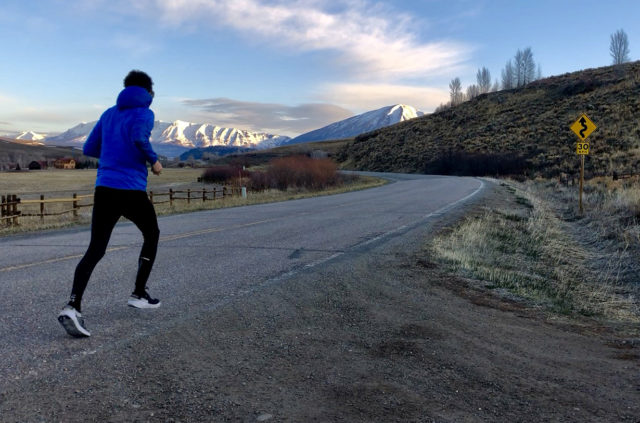
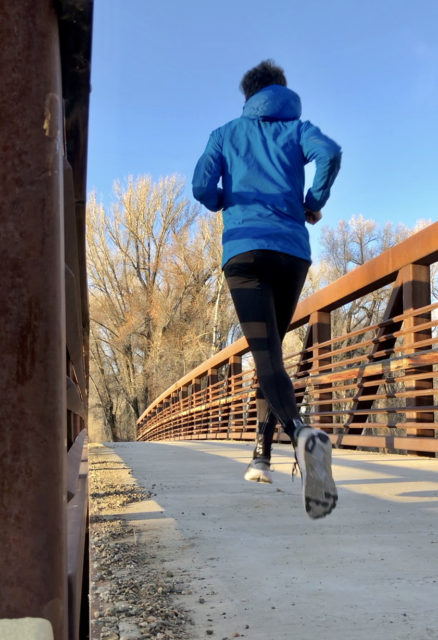
Is it just me, or did your review get some Speedgoat 3 text in the middle?
Good catch- Should be fixed now! Thanks!
I have a narrow heel and a long #2 toe which means to get a Hoka to fit me i have to go up 1/2 size which usually means the heel will slip. A shame because i love the cushioning of Hoka.
Hello Gordon. If compared rincon and triumph 17, what you recommend to buy?
Hey Igor- I haven’t run in the Triumph 17, so I can’t make a direct comparison to the Rincon. But from looking at it’s specs, the Triumph 17 is definitely quite a bit heavier (10.7 oz) and has a higher drop (8 mm) than the Rincon. So if you usually like a higher heel-to-toe drop and don’t mind a little extra weight the Triumph might be a bit more supportive / structured than the Rincon. If you’re more interested in finding the lightest high-cushion shoe you can, I’d still give the edge to the Rincon— just know that it doesn’t offer much support in the upper.
Igor – I just switched from the Triumph to the Rincon and I think I like it. It feels like a lot less shoe – with the cushion I need for my fragile feet! Just FYI
hi Gordon,
i have recently started to run in the hoka rincons.
have been getting blisters as well on the outer side of the balls of my feet.
may i know how u managed to resolve the blisters u got from this shoe?
Hey Eugene,
I only had blister issues a few times in the first ~50 miles I ran in the shoe. After that, they seemed to break in enough that it was no longer an issue. So hopefully your pair will break in as well over time. In the meantime you could try opening up the toe box as Bill suggested, or just tape the area on your feet that’s been rubbing before each run. That’s what I did after getting blisters in the shoe the first time, and it seemed to help.
one way is to open up the toebox. as follows. https://fellrnr.com/wiki/Shoe_Modifications
Would they be appropriate for heavy runners (95-100 kg) on distance up to 20km ?
Hey JF,
I would think the Rincon should have plenty of cushion for that kind of distance for someone of that weight, but if you want something a bit more supportive you’d probably be better off with a shoe like the Bondi 6 or Arahi 3— The Rincon does have a fairly minimal / unsupportive upper, which could feel a little flimsy for some people. The Bondi has a more structured upper and even more cushion than the Rincon, and the Arahi has some added support / pronation control with a similar amount of cushion. Hope that helps!
Thanks, it really does!